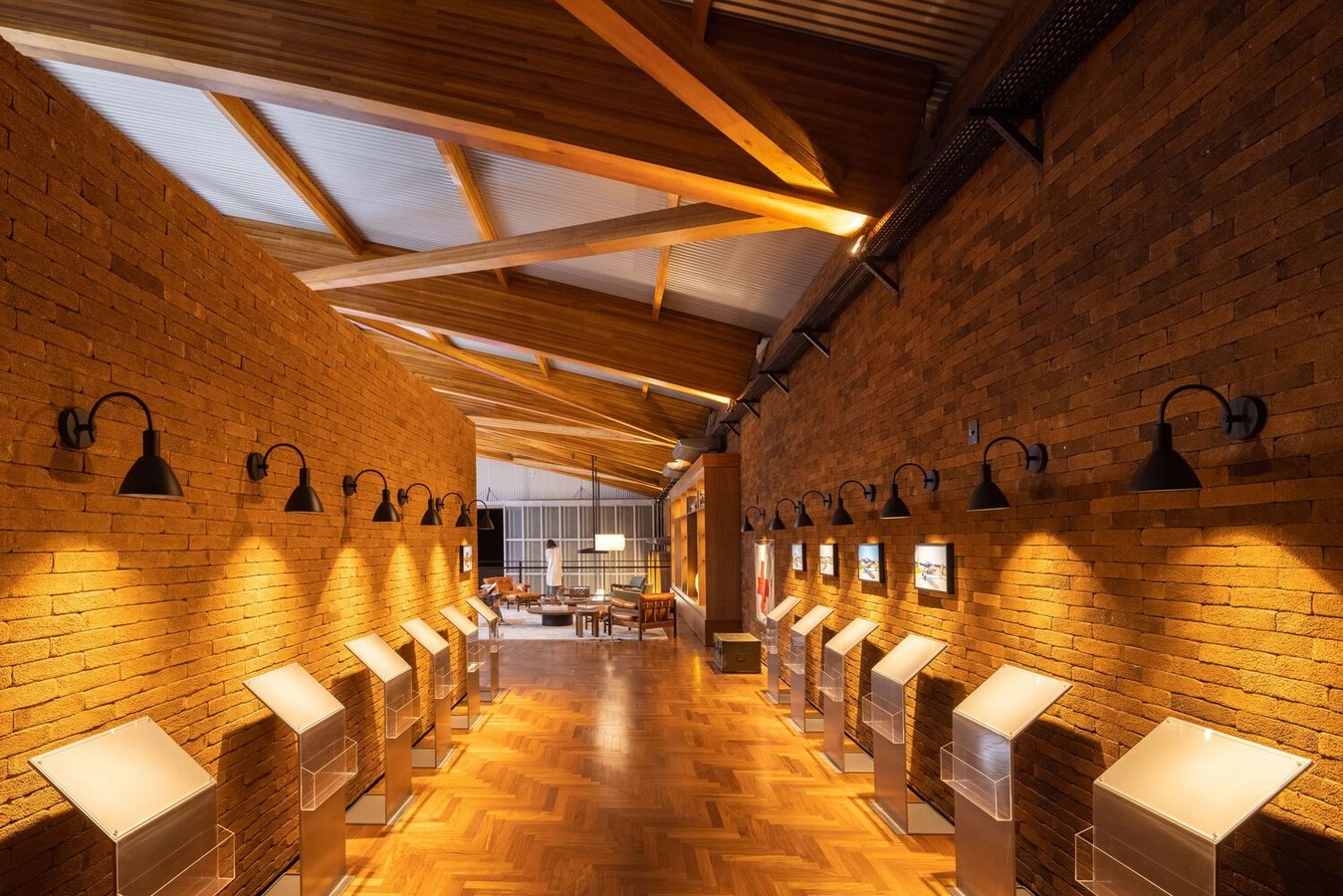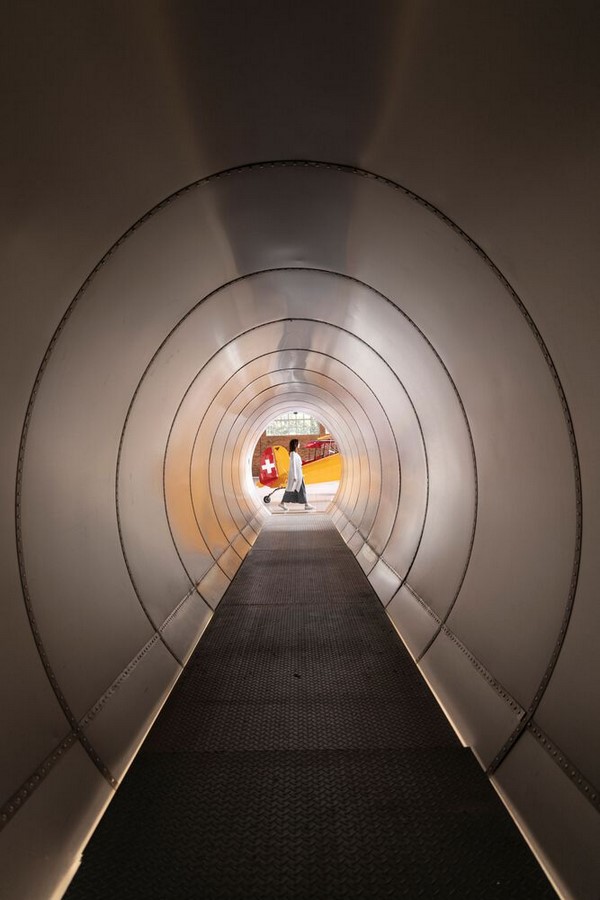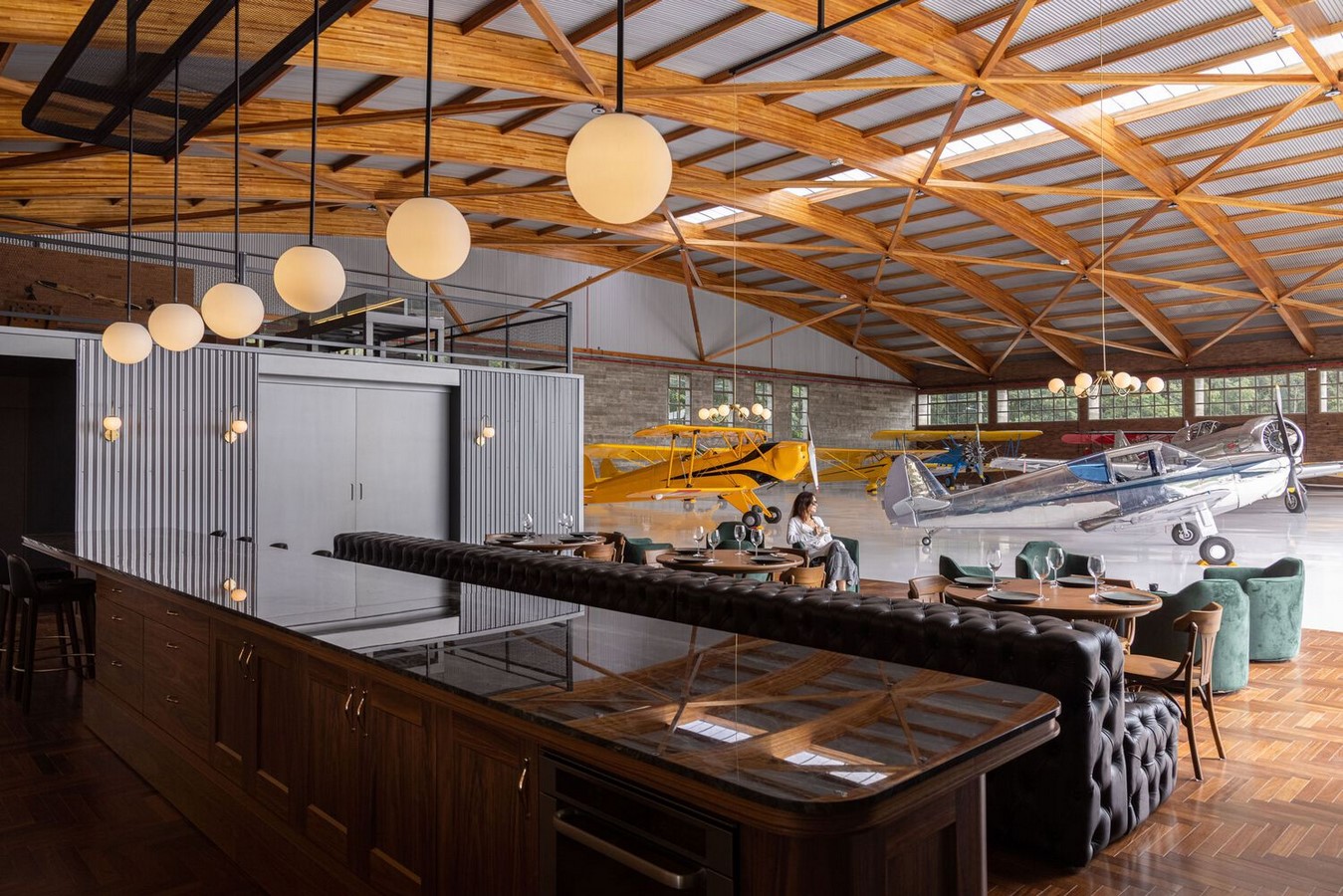Architectural Tribute to Aviation
Constructed in 2020, the Hangar Museum in Brazil, designed by Nola Arquitetura, serves as a repository for a remarkable collection of historic aircraft spanning from the 1930s to the 1970s. Inspired by classic hangars of yesteryears, the building pays homage to aviation’s golden era with its wooden structures and galvanized tiles.

Overcoming Challenges
Situated in an area with strict building regulations, including limitations on total area and maximum height, the project faced unique challenges. Compounded by harsh climatic conditions characterized by strong winds and cyclones, the design demanded a 38.7-meter-wide gate opening. To meet these requirements, laminated eucalyptus wood arches were ingeniously supported by concrete pillars, enabling a remarkable 50-meter free span—the largest ever built on wood.

A Fusion of Functionality and History
The ground floor of the hangar encompasses the aircraft garage, a connecting tunnel to an existing hangar, a bar, service facilities, a playroom, and a car garage. The museum, located on the mezzanine level, houses an array of aviation memorabilia, including magazines, books, and artifacts detailing the rich history of flight, alongside records of each aircraft in the collection.


Architectural Milestone
With its monumental wooden roof boasting an impressive 50-meter span, the Hangar Museum stands as a testament to Brazil’s architectural prowess. Its structural ingenuity not only elevates wooden construction in the country but also preserves the legacy of aviation for generations to come.

Conclusion: Honoring Aviation Heritage
As a symbol of architectural innovation and historical preservation, the Hangar Museum stands as a beacon of Brazil’s commitment to celebrating its aviation heritage. Through meticulous curation and faithful execution, it narrates the captivating story of aviation, honoring the pioneers and aircraft that shaped the course of history.


















Leave a Reply